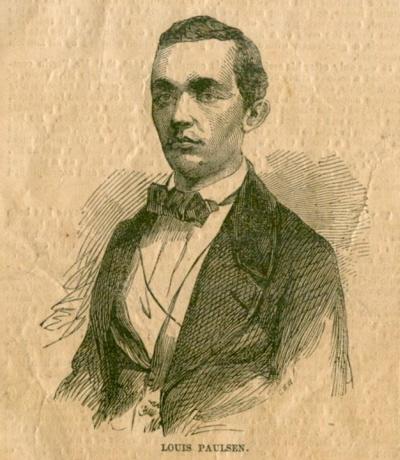
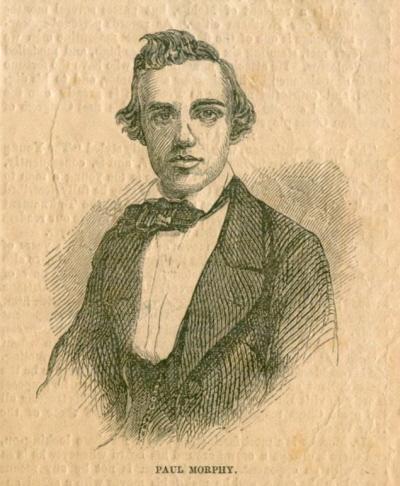
Edward Winter
On page 151 of the 12 June 1885 issue of the Chess Player’s Chronicle Hugh Browne wrote:
‘Alderman Ward was a fine, dashing player, with an irritable temper which once bore my long delay over a move so well that I wilfully tried how much it would bear; and when I moved at last, he only looked at his watch beside him and said, “28 minutes”.’


Source of the above pictures: page 345 of the 31 October 1857 issue of Frank Leslie’s Illustrated Newspaper (C.N. 7394).
A number of C.N. items have discussed instances of lengthy reflection (or, at least, lengthy consumption of time) before a move has been played. A famous case from the nineteenth century was examined in C.N. 4680, which reported that under the heading ‘Amazing facts’ the following had appeared on page 17 of Playing Chess Step-by-Step by Gary Lane (New York, 2004):
‘The slowest chessplayer ever was Louis Paulsen, who once thought for 11 hours over one move.’
This ‘fact’ of the ‘once’ variety would appear to be based on a misunderstanding. The figure of 11 hours was given, regarding the New York, 1857 tournament, on page 67 of Paul Morphy The Pride and Sorrow of Chess by David Lawson (New York, 1976) but in a different context:
‘Undoubtedly, slow playing on the part of Paulsen was the reason for time records being kept during his games with Morphy. Moves over five minutes during the second game and portions of others were recorded. During the entire second game, Morphy’s total time for moves over five minutes was only 25 minutes, while Paulsen consumed 11 hours for the same.’
The breakdown for that second Paulsen v Morphy game was given on page 246 of the tournament book:
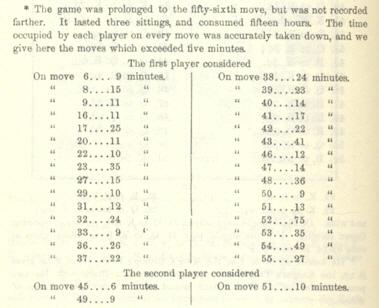
As shown below, page 248 of the tournament book indicated that the total duration of the third game between Paulsen and Morphy was 11 hours, most of it consumed by the former:
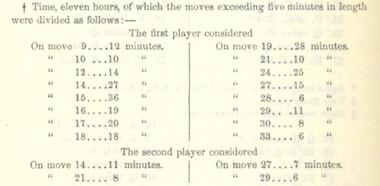
There is also the well-known anecdote about Paulsen, in play against Morphy, sitting motionless at the board and suddenly asking whether it was his move. Steinitz related it on page 46 of the February 1885 International Chess Magazine, on the authority of Thomas Frère.
C.N. 4679 gave item 26 in Napier’s Amenities and Background of Chess-Play (New York, 1934):
‘I remember seeing Showalter in a match game with Pillsbury brood 45 minutes over a fourth move. It was a Ruy López. Afterwards there came the explanation. “The cigar was good; and I thought that long looking might uncover some better move and sequel than those used.”’
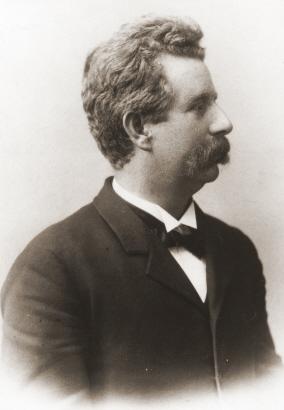
Jackson Whipps Showalter
C.N. 4679 also mentioned two instances of long thought by Wolfgang Uhlmann (1 hour 40 minutes and 1 hour 50 minutes), as related on page 351 of The Life and Games of Mikhail Tal (New York, 1976), or page 336 of the London, 1997 edition.
Page 32 of Kings, Commoners and Knaves referred to a short match in New York between Důras and Kupchik (which the former won with a score of +2 –1 =0). It began with a game which opened 1 e4 e5 2 Nf3 Nc6 3 Nc3 Nf6 4 Bb5 Bb4 5 O-O O-O 6 d3 d6 7 Bg5 Be6 8 Ne2 Ne7 9 c3 Ba5
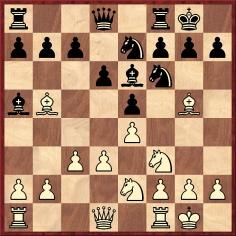
Here Důras thought for 58 minutes before playing 10 Ng3, and went on to win.
Source: American Chess Bulletin, October 1913, page 233.
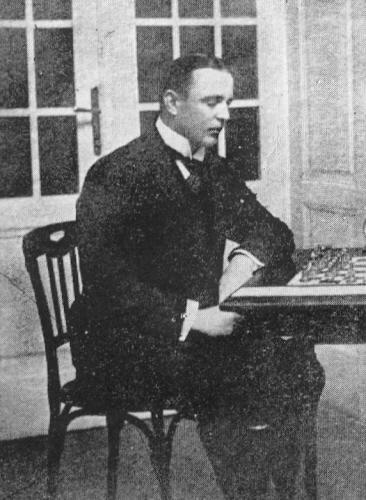
Oldřich Důras
C.N. 6119 gave this extract from pages xix-xx of the Preface by Benjamin M. Anderson Jr to Capablanca’s A Primer of Chess (New York, 1935):
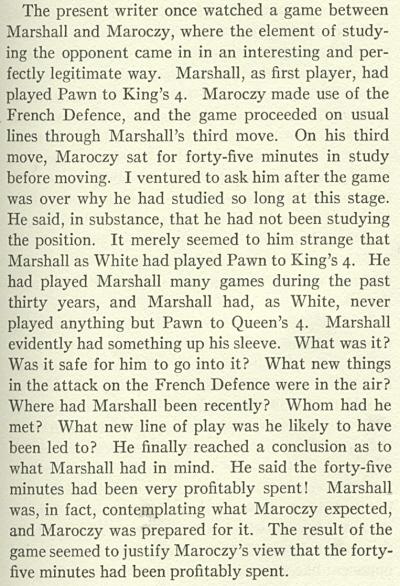
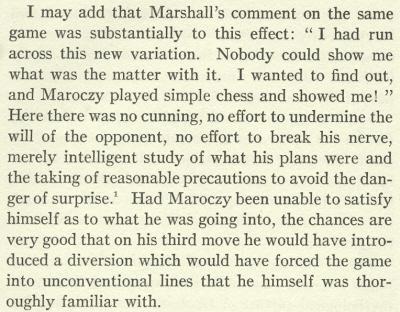
The passage was discussed in C.N.s 706 and 1177 (see pages 117-118 and 263 of Chess Explorations), as well as C.N. 6118. For the game in question we can still offer only one candidate: Marshall v Maróczy, Lake Hopatcong, 1926. (As mentioned in C.N. 5991, Anderson was in Lake Hopatcong at the time.) The game began 1 e4 e6 2 d4 d5 3 Nc3 Nf6 4 e5 Nfd7 5 Qg4 c5.
The Endnote on page 263 of Chess Explorations:
C.N. 1177: ‘This incident was reported in the Cuban magazine Jaque Mate 2-3/1971 (page 85), where it was claimed (on what basis?) that 3 Nd2 was played. That would exclude the Lake Hopatcong game, but we feel it is more likely that Jaque Mate is wrong.’
On page 293 of his Marshall book, Soltis stated categorically, without indicating his source, that Maróczy’s long thought was indeed against Marshall at Lake Hopatcong, 1926.
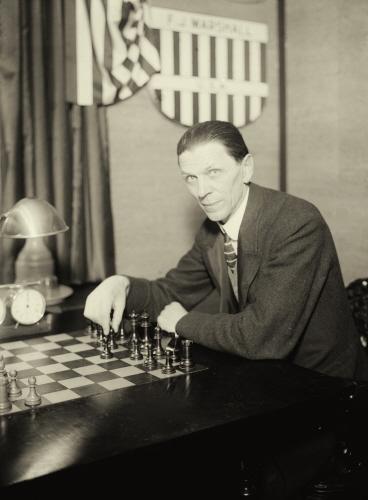
Géza Maróczy
‘In the 11th game of their match in 1927 for the world’s championship, Capablanca took two hours on one move, and Alekhine took an hour and three-quarters for his reply.’
C.N. 2344 (see page 345 of A Chess Omnibus) noted that the above claim appeared, in more or less identical wording, on page 39 of Irving Chernev’s Curious Chess Facts (New York, 1937), page 101 of the same author’s Wonders and Curiosities of Chess (New York, 1974) and page 100 of Chess by Kenneth M. Grover and Thomas Wiswell (London, 1952).
In C.N. 6315 Alan O’Brien (Mitcham, England) noted that in another match-game, the 28th, this position arose:
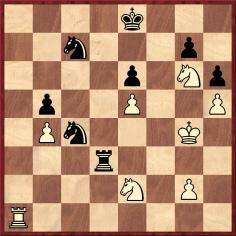
Alekhine played 41 Nef4 and wrote:
‘The text move was sealed and it took me an hour and 50 minutes to consider it, the record length of time for this match.’
The above is the English translation on page 199 of On the Road to the World Championship 1923-1927 (Oxford, 1984). See too pages 205 and 469 respectively of the original German and French editions of Alekhine’s book (Auf dem Wege zur Weltmeisterschaft and volume two of Deux cents parties d’échecs).
After 41...Rb3 42 Ra7 Kd8 43 g3 Alekhine reported that Capablanca thought for 40 minutes before offering a draw, which was accepted.
According to page 2 of Crítica, 30 November 1927 Alekhine took four hours and two minutes for the entire game, Capablanca’s total being two hours 30 minutes. The London Rules, under which the match was played, specified that on each play-day the session would last five hours and that the time-limit was 40 moves per two and a half hours.
Making all these ‘facts’ compatible with each other is far from easy.
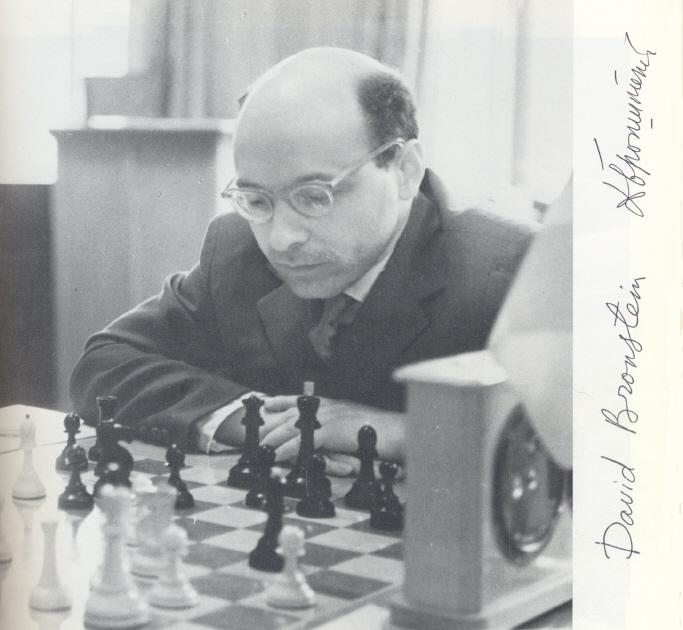
C.N. 4632 quoted from a column by G. Koltanowski on page 3 of Chess Digest Magazine, March 1969:
‘David Bronstein is known to take a long time before making his first move. In Berlin’s Lasker Memorial, he hadn’t yet made his first move when Vassikoukov [sic] mated Zaitzev at the 15th move.’
This refers to a tournament in 1968. Apart from the consideration that the mate in question would have come at move 16, not 15, we wondered what facts were available regarding the story. In C.N. 4639 Alan McGowan (Waterloo, Canada) responded:
‘The tournament book (Internationales Dr.-Emanuel-Lasker-Gedenkturnier 1968), published by the Deutscher Schachverband der DDR) shows that the game below (game 60, on page 61) was played in round eight:
Evgeny Vasiukov – Alexander Zaitsev
East Berlin, 25 November 1968
Caro-Kann Defence1 e4 c6 2 d4 d5 3 exd5 cxd5 4 c4 Nf6 5 Nc3 Nc6 6 Nf3 Bg4 7 cxd5 Nxd5 8 Qb3 Bxf3 9 gxf3 e6 10 Qxb7 Nxd4 11 Bb5+ Nxb5 12 Qc6+ Ke7 13 Nxb5 a6 14 Nd4 Nb4 15 Bg5+ Resigns.
The time used by each player is shown as 0.50 for White and 0.24 for Black.
The game Csom v Bronstein was played in the same round (game 61 in the book, also on page 61):
István Csom – David Bronstein
East Berlin, 25 November 1968
Caro-Kann Defence1 e4 c6 2 Nf3 d5 3 Nc3 g6 4 d4 Bg7 5 Be2 dxe4 6 Nxe4 Bf5 7 Ng3 Bg4 8 c3 Bxf3 9 Bxf3 Nf6 10 O-O O-O 11 Re1 e6 12 Bg5 Nbd7 13 Ne4 Drawn.
The time used by each player is shown as 0.50 and 1.00.
The introductory notes for the round give the following comments:
“K.o. im Caro-Kann
Mit Wasjukow – Saizew (Nr. 60) gab es die einzige Grossmeisterpaarung des Tages. Aber schon nach 74 Minuten gehörte diese Partie der Turniergeschichte an. Auf einer schachlichen Sprintdistanz über 15 Züge, die leider auch in diesem Wettstreit zur Remisspezialdisziplin erkoren wurde, kam Ewgeni Wasjukow als Sieger ins Ziel. Noch ehe die Kapitulation erfolgte, hatte es sich im Saal herumgesprochen: Saizew ist in zwei Zügen matt!! ‘Kaum zu glauben’, bemerkten Kiebitze. “Nicht solide”, meinte Grossmeister Flohr. Niemand hatte ein solches Ende ahnen können. Die Partie verlief bis zum 12. Zug in theoretischen Bahnen. Dann setzte Wasjukow ungewöhnlich fort (13 Sb5:). Auf unerschlossenen Pfaden galt es sich nun zurechtzufinden. Zwei Züge danach geschah bereits der tödliche Fehltritt (14...Sb4??), und Wasjukow fügte den Raritäten eine weitere Mattminiatur hinzu.
Allerdings fanden sie weit weniger Beachtung, weil die Würze hier nicht in der Kürze lag und manches überhaupt ohne Salz gekocht war. Csom – Bronstein (Nr. 61) zeigten die wenigsten Züge.”’
We are still seeking corroboration, or otherwise, of the statement by Koltanowski quoted in C.N. 4632. Other little-known examples of ‘long ponderings’ will also be welcome.
The above article originally appeared at ChessBase.com.
On page 39 of 15 Games & Their Stories Botvinnik ponders whether he acted correctly in a game against Reshevsky by not telling his opponent that the latter had forgotten to press his clock, and concludes that most likely he did the right thing by saying nothing. Yet on page 68 Botvinnik himself is to be found forgetting to stop his clock and he remarks that ‘the portion of the Chess Codex forbidding the referee from drawing the player’s attention to a possible time-forfeit was in need of revision’.
(727)
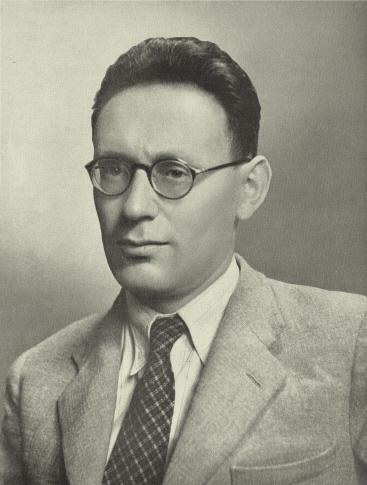
Mikhail Botvinnik
Alekhine’s comment on Sämisch-Navarro, Madrid, 1943:
‘Sämisch wanted to show in his last game of the tournament that he is capable of playing a game without running out of time.’
Source: tournament book, page 212.
(784)
‘I idly reflected that these masters put in some four or six hours’ strenuous thought over one game – and it is strenuous all right, some of them being obviously tired out by the end of the day. But we problemists think nothing of 20, 40, 100 strenuous hours over one solitary problem. There are two of my retro problems [which] cost me six years of intermittent work – at a guess, a thousand hours – to complete, and I have a score of others over which I have worked ten years, and they are still baffling me.’
T.R. Dawson, in an article giving his impressions of the London, 1922 tournament, published in the Chess Amateur, September 1922, pages 360-361.
(1597)
From an editorial by C.S. Howell on pages 17-18 of the Chess Weekly, 12 December 1908:
‘We admire the modern style of a Lasker who accumulates small advantages and relentlessly squeezes his opponent, but the big majority of us would rather play over the games of Morphy than those of Lasker. We want sacrifices and combinations and brilliancy.
Let’s do something! Let’s rise up in our wrath and make the masters play at the rate of 40 moves an hour, and in our little matches and tournaments let’s play at the rate of 50 moves an hour! Then more of the public will play and the published games will have more sparkle and spontaneity to them. The natural objection to such a plan is that it would result in blunders and a poor quality of chess. At first, perhaps, but under a fast time-limit players would have to use position judgment and that judgment would develop and improve. Trained players generally pick out a good move at sight and waste time only because they have it.
For proof, the reader is referred to the quality, brilliancy and accuracy of Pillsbury’s simultaneous blindfold play, which was conducted generally at a speed well above 50 moves an hour. In London, Dr Lasker, in an exhibition against 20 strong players, averaged over 100 moves an hour and only lost one game. The writer watched the exhibition and did not see the doctor make one real blunder.
And these are cases where the attention was divided among many games. In all seriousness, we should like to see the experiment tried in at least one important tournament.’
(2746)
Part of a letter from Edward Lasker which was published on page 132 of CHESS, April 1953:
‘This gentleman [Kenneth Harkness] once told me himself that he is in chess only for what money he can make out of it. That is why he was always fighting to increase the speed of tournament play – to some such absurd thing as 50 moves per hour, if I remember correctly – because he felt that more “action” would attract more onlookers, and onlookers was what chess needed in his opinion to make chess pay.
Amateur chess in which the time limit is of minor importance was not different in Mr Harkness’s opinion from master chess in this respect. I hardly need add anything to characterize the fitness of this gentleman to give an opinion on any matters connected with master chess.’
(3065)
On page 168 of the June 1953 CHESS, Lasker wrote that he had not intended his letter to be for publication, did not wish to enter into polemics and therefore retracted his critical remarks.
(3068)
From page 145 of Chessreading Treasure by Wilf Holloway (Nörten-Hardenberg, 1993):
‘In New York in 1893 [sic – 1894] Wilhelm Steinitz lost a game against Adolf Albin and this was not only unusual because Steinitz was generally the better player. That game also went down in history for another reason – it was the first ever recorded grandmaster time claim win. Despite a clear rule it was then still considered unsporting to claim a win, but with an otherwise lost position Albin stuck up for his rights when his opponent overstepped the limit. One must actually ask oneself what is more unsporting, deliberately taking more time than one is allowed or appealing against this sort of thing to avoid being disadvantaged? We see things more clearly perhaps these days but Albin was considered to be a cad that day. Aren’t people strange?’
Regarding the finish to this game, below is the account published on pages 107-108 of the December 1894 Chess Monthly, although caution is invariably required over the Monthly’s writings about Steinitz:
‘Practically, Steinitz only drew one game, against Hymes, whilst he lost one game by exceeding his time in the game with Albin. He ought to have lost this game on its merits, but in the end he had the best of it. An appeal was made to the committee by Steinitz against their decision of scoring the game against him, but the committee maintained their decision, and justly so. It is difficult to see why he should have protested at all; and, if we are not mistaken, Steinitz himself was not slow to avail himself of any infringement of the time-limit rule on former occasions. At the Vienna tournament, 1882, he claimed the game from Winawer when, to ascertain whether the hand of Winawer’s clock had passed the hour, the blade of a penknife had to be used. The eye, unaided by any instrument, could not detect that the hand had passed the figure upon the dial; further, in the same tournament, Bird, who did not take down the game, was under the impression that Mason had exceeded his time, and stopped the game. Upon remonstrance on the part of Mason, the game proceeded, and was won by Mason. Subsequently an agitation by interested competitors was got up (Steinitz amongst them), the matter was brought before the committee, and the game was scored against Mason. In the game with Albin, Steinitz had consumed his allotted two hours for 33 moves instead of 36. It is quite clear that he could not make three more moves in no time; his game was therefore forfeited by the rule governing the time-limit, and he should have resigned the game without protest.’
As noted on page 172 of the Vienna, 1882 tournament book (published by Olms in 1984), another casualty in that event was Noa, who overstepped the time-limit against Zukertort as early as move 15.
(3370)
From Tim Bogan (Chicago, IL, USA):
‘I have come across two claims of chess played at high speed which seem exaggerated to me. Firstly, Alexander Kotov writes on page 32 of The Art of the Middle Game (Harmondsworth, 1964):
“When I stayed behind at school with my school friends after lessons, and managed to play up to a hundred games in a single afternoon...”
If we define “afternoon” generously as noon until 6 p.m. the time-limit would have to be 1.8 minutes, i.e. each player is allowed 108 seconds to make all his moves (6 hours x 60 minutes = 360 minutes / 100 games = 3.6 minutes per game for both players). This leaves no time to set up the pieces, set the clock, etc., but I have seen young players of speed chess complete all their moves within one minute, so it is barely possible.
Reuben Fine, however, takes us to a new level. He writes on page 61 of Chess Marches On! (New York, 1945):
“Naturally, tournament chess requires several hours, sometimes as many as eight or ten, for the completion of a single game; so does baseball, and football, and golf. But chess at lightning speed is also a possibility – experts in offhand moments can finish 50 or 100 games an hour if they are so minded.”
Fifty games in one hour would require a time-limit of 36 seconds for a player for the entire game (60 minutes / 50 games = 1.2 minutes per game for both players). A hundred games in an hour would necessitate a time-limit of 18 seconds for a player to complete all his moves. While it is possible to play such games, it seems certain that each would be prematurely ended by a player exceeding the time-limit in a position where his pieces were hardly developed. They could not be “games” in the commonly understood sense.
Are there other exaggerations of chess speed?’
(3473)
On page 53 of Wonders and Curiosities of Chess (New York, 1974) I. Chernev wrote:
‘L. Hoffer consumed eight hours analyzing a game sent to him for adjudication – which was considerably more than the entire time spent on the game by the players themselves.’
Which was the game?
(3998)
This article by G.H. Diggle originally appeared in Newsflash, February 1986:
‘CHESS (Christmas 1985) reveals that the FIDE General Assembly (Whom God Preserve) has resolved that in big chess events in future every game is to have a first session of six hours (40 moves in the first two hours, then 20 moves in one hour before adjournment). This is no doubt a laudable effort to postpone if not sometimes eliminate that “inevitable hour” at which the game ceases to be one between the two players, and the position spends all night on the operating table being disembowelled by scientific “seconds”, who often pronounce the “patient” dead on the following morning. Whole cemeteries of such games are to be found in modern chess periodicals, with tombstones inscribed:
PASSED PEACEFULLY AWAY
WITHOUT RESUMING PLAY
AGED (invariably) 41 MOVES.But six-hour sessions, it has been objected, may cause our grandmasters such pre-prandial pangs that all can be ruined in the last hour, when half-starved genius only sheds the palest of rays. An examination of the “time” conditions of great matches of the past is therefore of some interest. In the “sandglass” days of Anderssen v Steinitz 1866 it was 20 moves each side in two hours, all games to be played out at one sitting except for a quarter of an hour allowed for “rest and refreshment” after four hours’ play. This meagre interval for rations may have been devised on the principle of keeping the two masters in the same aggressively alert state as Mr Rucastle’s dog in The Adventure of the Copper Beeches – “we only feed him once a day, and not too much then, so he’s always as keen as mustard”. Compared with this, Steinitz v Blackburne 1876 was a bon vivant’s paradise – though the time-limit was 30 moves in the first two hours and one hour for each subsequent 15, the players adjourned for dinner after four hours, resuming afterwards in a state of repletion which in at least one game led to such a “tremendous falling-off in the play” that one unkind critic attributed the cause to “the cuisine, or the wine, or the salmon, or – can you suggest any other obfuscating agency?”
Steinitz v Zukertort 1886 was played with the same time-limit, but matters were simplified in Steinitz v Lasker 1894 and Lasker v Capablanca 1921, the rate being 15 moves an hour throughout with sessions (at least in the latter case) of four hours (9 p.m. to 1 a.m.) to avoid the overpowering “Havana Sun”. Finally, Capablanca v Alekhine 1927 introduced 40 moves in two and a half hours and a first session of five hours. This arrangement has continued to this day, and seems not to have spoilt the games even when the combatants showed disparity in speed. Of particular interest is “H.G.’s” full BCM report of the two great Championship matches in which Botvinnik lost his title to Tal (1960) but recovered it in 1961. A complete record is given of the time taken by both players over every move.
In the first match, the veteran champion, out of practice through temporary non-participation in tournaments, was slower in every one of the 21 games except the last – in the long games often an hour slower, and in the seventh game of 52 moves, which he lost, he was nearly two hours behind. On eight occasions he took 30 minutes or more over one move, his longest times being 42 minutes each (games 9 and 11) – both sealed moves. His young challenger exceeded the half hour only twice, though curiously he devoted 32 minutes to the very last move of the match (his 17th), after which a draw was at once agreed, after one hour 24 minutes of play only. In the return match, however, Botvinnik having recovered his form, the two clocks usually ended up only a few minutes apart – even in the gigantic 121 move draw (game 20) they showed Tal six hours 55 minutes and Botvinnik six hours 41 minutes – a close finish worthy of a University Boat Race.’
This article is to be found on pages 35-36 of volume two of Chess Characters.
(5540)
Further particulars will be welcomed concerning the familiar story below, which is taken from page 22 of the 16 July 1887 issue of the Columbia Chess Chronicle:
‘The brothers L. and W. Paulsen were always known to be remarkably slow players. At an international tournament, before clocks were introduced to regulate the number of moves to be made in an hour, W. Paulsen consumed just 70 minutes in making a move in a game which he was playing with Zukertort. Z., who was conversely known as a remarkably rapid player, to pass the tedious time engaged in conversation with an amiable lady sitting near the table, and who had followed the development of the game with more than common interest. At last Paulsen moved his queen from Kt2-B3.
The lady unable to conceal her surprise exclaimed, “so short a move after so long a deliberation”.’
(5704)
David Kuhns (St Paul, MN, USA) asks for references to illustrations of players using a sand-glass timer (hour-glass).
(5912)
Jonathan Berry (Nanaimo, BC, Canada) asks about the origins of the rule that the game is forfeited by a player who does not come to the board during the first hour of the playing session. Our correspondent believes that this has been termed the ‘Rubinstein rule’, but can any connection with Akiba Rubinstein be established?
(6175)
Stephen Wright (Vancouver, Canada) quotes from page 36 of Chess Canada, September-October 1974, in an article by Bent Larsen entitled ‘Blame it on the Computers’:
‘Rubinstein did not like the public, and in some of his last tournaments he preferred to arrive very late and play quickly, which is the reason for the one hour rule we have now.’
From Robert John McCrary (Columbia, SC, USA):
‘The earliest example of the provision forfeiting a player for arriving one hour late at the board is in the additional rules of the Fourth American Chess Congress (Philadelphia, 1876). Page viii of the tournament book gives that rule, which was added by the players to the original rules, as follows:
“A player coming in one hour after the commencement of the sitting will forfeit the game, subject, however, to an appeal to the committee, who, if his excuse be valid, may decide otherwise.”
A “sitting” referred to each of three segments of four or four-and-a-half hours in one game (allowing for meal breaks), so that a player might forfeit for arriving an hour late to resume a game already in progress after a break.
The first instance of the modern rule that I have seen is rule 12 on page xii of the London, 1883 tournament book. It states that a player arriving late for a game or after the adjournment will have have his clock started, and will forfeit if one hour late; or earlier if he exceeds his 15 moves per hour time-limit after the adjournment even if before the hour. The rule specifies that both players lose if they are both an hour late.
For the period before 1876 I have found only more lenient rules, usually allowing solely for fines for late players. However, at London, 1862 there was a forfeit after five hours, following a grace period of one hour, plus two full time-control periods at 20 moves in two hours. The actual rule, on page lii of the tournament book, concludes:
“In any case he must complete 40 moves within four hours of his glass being set running. Should he not make his appearance within five hours of the time appointed, he shall forfeit the game.”
However, the next rule excludes double-forfeits, saying that the players will be merely fined if both are five hours late. (Players set their own game times by agreement.)’
(6178)
Tony Gillam (Nottingham, England) points out a reference on page 63 of the 12 February 1911 issue of Deutsches Wochenschach to the time-limit at that year’s tournament in San Remo:
‘Gespielt wird täglich von 9½-2½ Uhr; die Bedenkzeit beträgt 45 Züge in 2½ Stunden, außerdem 3 Gnadenminuten.’
Thus apart from a limit of 45 moves in 2½ hours there existed ‘three minutes’ grace’. What is the exact meaning of that provision?
(6349)
Drawing attention to a brief list (concerning nineteenth-century matches and tournaments) on a Swiss Chess Federation webpage, Ralf Mulde (Bremen, Germany) asks whether a chart exists of the time-limits for major events of all periods.
(6974)
C.N. 2170 (see page 241 of Kings, Commoners and Knaves) gave our suggestion for the first game in which it is known how much time was consumed on the individual moves: Reshevsky v Alekhine, AVRO, 1938 (CHESS, 14 December 1938, pages 147-149).
Page 8 of CHESS, 21 August 1970 stated:
‘David Bronstein makes no secret of his admiration of our introduction of time records in CHESS in 1938 and 1939 in connection with games in the AVRO tournament.’
Courtesy of a 1968 issue of Soviet Weekly (does any reader have a copy?) CHESS gave the score of Bronstein v Larsen, Amsterdam (Interzonal), 1964:
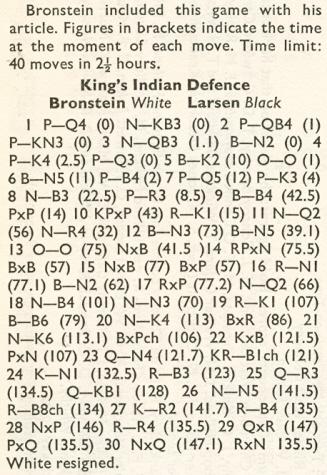
Detailed notes can be found on pages 65-68 of David Bronstein – Chess Improviser by B.S. Vainstein (Oxford, 1983) and on pages 84-91 Larsen’s Selected Games of Chess 1948-69 by Bent Larsen (London, 1970). The latter set of annotations refers on several occasions to the time taken on particular moves.
(7085)
From the obituary of George Webb Medley on pages 13-14 of the January 1899 BCM:
‘To Mr Medley’s efforts must be attributed the acceptance of a time-limit in chess matches. Before this condition operated, chess matches were sometimes of portentous duration, as witness the championship match, Staunton versus St Amant. Indeed, it was no uncommon thing for notes like these to be attached to games. “No move has been made for an hour and a quarter.” “Both players appear to be asleep.” Mr Medley himself has stated that Harrwitz once took half an hour over his first move. From this abyss of gross stupidity the time-limit has saved us, and for this Mr Medley deserves well of the chess world.’
This photograph of Medley comes from opposite page 82 of A Century of British Chess by Philip W. Sergeant (London, 1934):
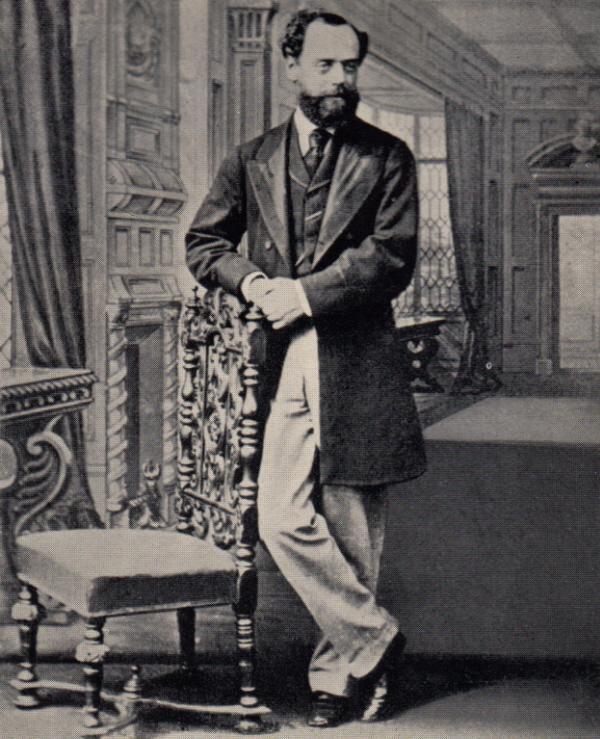
(7460)
Concerning a book on Medley, see C.N. 11216.
From pages 289-290 of the October 1936 Deutsche Schachzeitung:
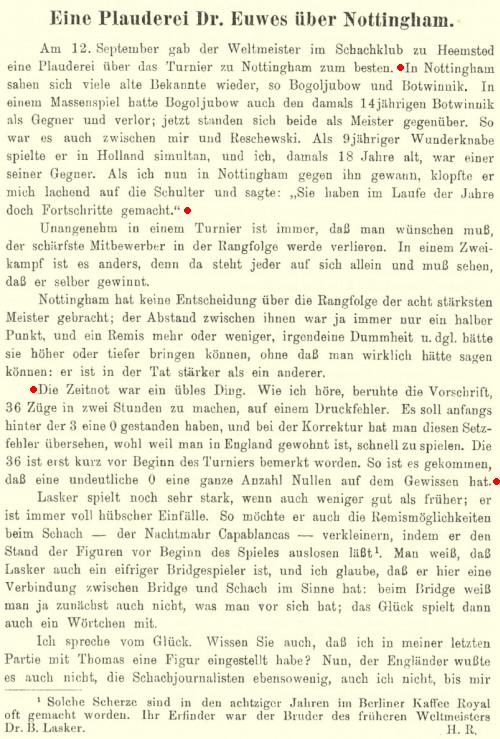

A French version was published on pages 173-174 of the Schweizerische Schachzeitung, November 1936:
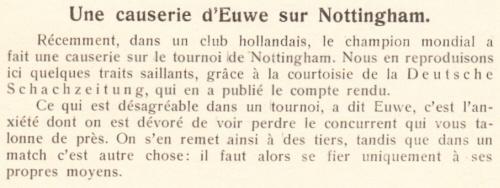
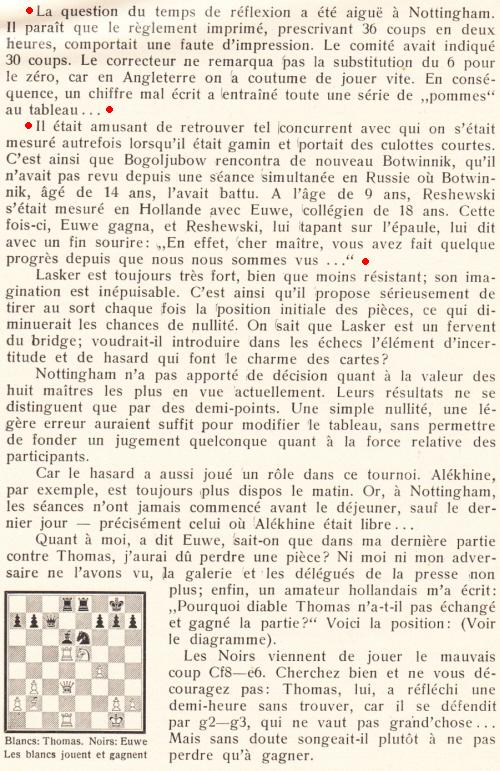
Three statements attributed to Euwe stand out:
Concerning the time-limit, a similar report appeared on page 71 of Schach-Grossturnier Nottingham 1936 by Hans Kmoch (Vienna, 1938):
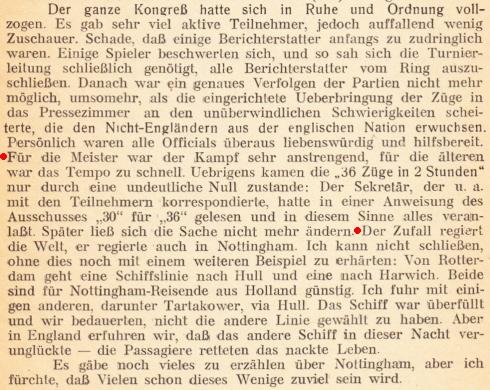
We revert to the issue of the time-limit towards the end of C.N. 8162.
(8161)
Is it true that after Nimzowitsch played 1 b3 against Sämisch at Carlsbad, 1929, Black thought for 40 minutes? Such a suggestion was made on page 4 of the Sunday Times, 17 November 1929:
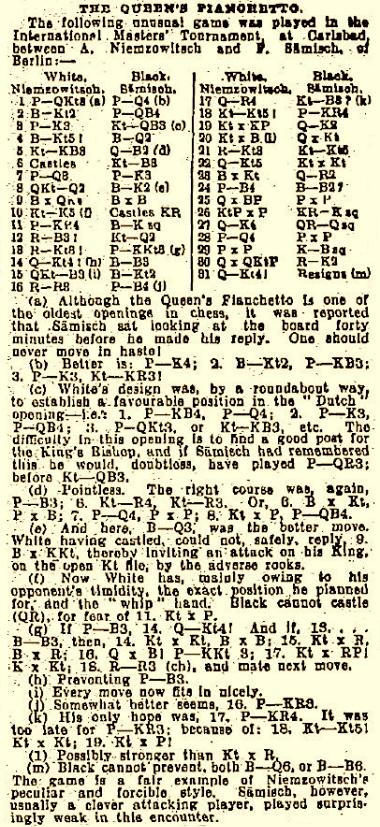
(8537)
Pages 252-253 of Carl Schlechter! Life and Times of the Austrian Chess Wizard by Warren Goldman (Yorklyn, 1994) quote from Rudolf Spielmann’s book Ein Rundflug durch die Schachwelt:
‘The clock knows no favourites, for even Capablanca, a rapid player, occasionally lost on time. Conversely, the powerful Carl Schlechter always reached the time control with five minutes for his final move.’
Is it true that Schlechter never lost a game on time, and can the same be said of any other prominent master?
(2171)
The passage in question was on page 16 of the Spielmann volume (Berlin and Leipzig, 1929):
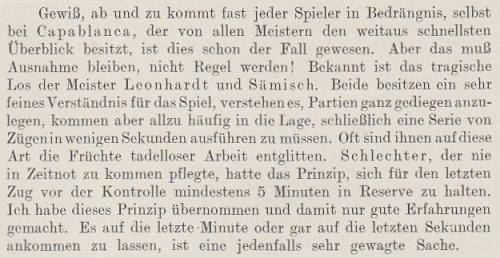
Timothy J. Bogan asks which leading masters have sustained the fewest losses on time (in tournament and match games). Documentation from readers will be much appreciated.
To start with Capablanca, the paragraph below comes from page 55 of Wonders and Curiosities of Chess by Irving Chernev (New York, 1974):
‘Capablanca, who has been credited with the quickest sight of any master who ever lived (“His speed in play”, says Fine, “was incredible in the early years. What others could not discover in a month’s study he saw at a glance.”), once lost a tournament game on time limit.’
(The Fine quote comes from page 111 of his book The World’s Great Chess Games (New York, 1951); Fine wrote ‘earlier’, not ‘early’.)
Chernev’s paragraph concerned Riumin v Capablanca, Moscow, 1935. A second game which the Cuban lost by exceeding the time-limit was in Arnhem on his 50th birthday, against Alekhine in the AVRO, 1938 tournament.
A passage by Harry Golombek about Botvinnik also comes to mind, from page 143 of the June 1958 BCM. It described the conclusion of game 15 in that year’s Smyslov v Botvinnik world championship match:
‘... absorbed in calculations as to how to obtain the win, he [Botvinnik] quite forgot about his clock and forfeited the game on time, a result that was received in stunned silence by the audience. The saddest part of it all was that even when he exceeded the time-limit he had a won ending, since he possessed two very powerful bishops and could create a remote passed pawn. He told me immediately afterwards that this was the first occasion in his life on which he had lost a game on time.’
For the loser’s own comments, see, for instance, page 244 of Botvinnik-Smyslov Three World Chess Championship Matches: 1954, 1957, 1958 by M. Botvinnik (Alkmaar, 2009):
‘As I sat there, absorbed in these thoughts, great was my astonishment when the chief arbiter Ståhlberg came over to our table and announced that Black had lost on time. Having two-three minutes for a couple of moves, I had simply forgotten all about the clock and had exceeded the time limit ...’
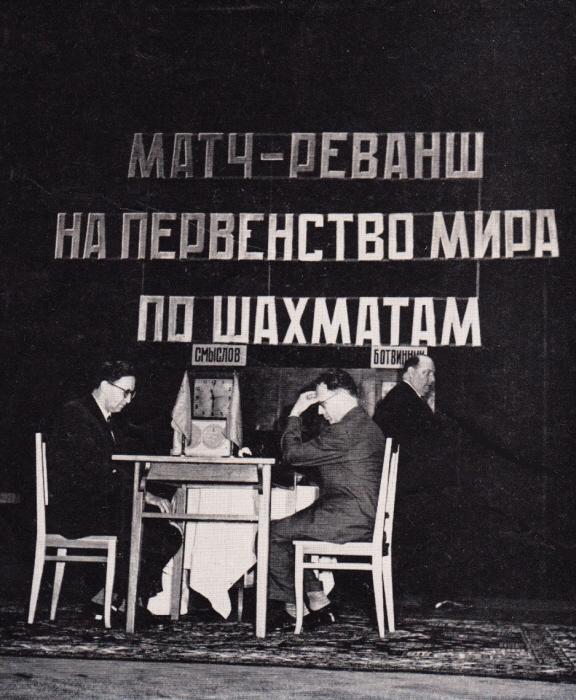
V. Smyslov, M. Botvinnik and G. Ståhlberg (Chess Review, July 1958, page 203)
(8090)
A game played in the Metropolitan League, taken from pages 69-70 of the April 1932 American Chess Bulletin:
Alexander Kevitz (Manhattan Chess Club) – Reuben Fine
(Marshall Chess Club)
New York, 16 April 1932
Dutch Defence
1 c4 f5 2 d4 Nf6 3 g3 e6 4 Bg2 Bb4+ 5 Nc3 O-O 6 Nf3 Nc6 7 O-O Bxc3 8 bxc3 Ne4 9 Qd3 b6 10 Ba3 Re8 11 d5 Na5 12 Bb4 Nc5 13 Qd4 d6 14 dxe6 Nxe6 15 Qd2 Bb7 16 Bxa5 bxa5 17 Rab1 Be4 18 Rb5 c6 19 Rb2 Nc5 20 Nd4 Bxg2 21 Kxg2 Qd7 22 Rfb1 Qf7 23 Nxc6 Qxc4 24 Qxd6 Na4 25 Rb7 Qe4+ 26 Kg1 Nxc3 27 h3 f4 28 Qc7 Qg6 29 Ne5 Rxe5 30 Qxc3 Rae8 31 Qc4+ Kh8 32 Qxf4 Rxe2 33 Rb8 h6 34 Rxe8+ Rxe8 35 Rc1 Qe6 36 Kh2 Qxa2 37 Rc7 Kg8 38 Qd4 Resigns.
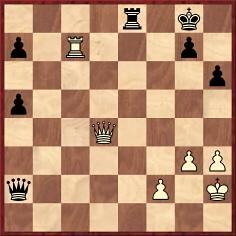
C.S. Howell wrote in the Bulletin:
‘A most entertaining game. I am informed that both players were hard pressed for time. As is usual in such cases, the more experienced player wins out. Fine, a truly promising young player, here overlooks 38...R-K4! If White captures the rook, 39...QxPch draws.
Pillsbury once gave me a very useful bit of advice regarding clock difficulties. It was to note the time on the score-sheet after I made each move; after the game to play it over and try to explain to myself why I took so long to make obvious moves or ones that my chess instinct should have indicated. It is good discipline and will help young players who get into trouble with the clock.’
(8585)

Position after 38 Qd4
From Lonnie Kwartler (Chester, NY, USA):
‘The defense suggested for Fine, 38...Re5, prolongs the game, but White still has a win with 39 Qd8+ Kh7 40 Qf6 Rg5 41 h4 Rg6 42 Qf5. (This position can be reached with 39 Rc8+ four moves later.) Of course, 38...Re5 would have been a good try, and if Black does not fall into mate White is “limited” to a clearly won endgame. Black cannot stop White’s attack without exchanging queens.’
(8588)
Dwight Weaver (Southaven, MS, USA) draws our attention to his article World Chess Championship in Tennessee – 1907, which includes an account of Marshall’s protest over the use of stop-watches rather than a chess clock.
(8641)
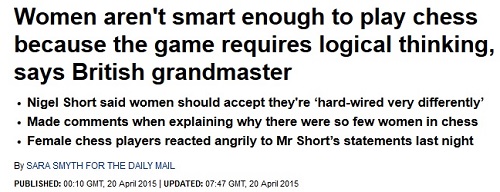
Newspapers are forever reporting alleged anger, fury, etc. vented ‘last night’. (Profound discontent generally seems nocturnal.) The original report about Nigel Short, in the Daily Telegraph of 20 April 2015, illustrates how news stories may nowadays be confected from Twitter, and one tweet grabbed is a claim that Short’s comments were ‘incredibly damaging’. (‘Incredibly’ generally means ‘very’.) Last night’s ire is a curiously delayed reaction to an article by Short, ‘Vive la Différence’, on pages 50-51 of the 2/2015 New in Chess – an issue which was published a month ago but evidently remained unavailable last night, and even today, given that much of the coverage bears little relation to what Short wrote in the Dutch magazine.
It is incredibly easy to express simplistic views on the topic of chess and women in ignorance of the key factors, whether biological, cultural, psychological, sociological, etc., which may or may not explain any differences between male and female chessplayers, whether now or in the past. We have made that last sentence as woolly as possible to underscore the futility of such general, synthetic ‘debates’, which concern, in full or in part, questions of opinion and taste.
If Nigel Short’s New in Chess article contained factual mistakes, misquotations, faulty statistics, bad writing or plagiarism, there would be every reason to complain, but we have seen no attempt to rebut, even, this important paragraph of his on page 51:
‘Given Susan Polgar’s undoubted genuine achievements – such as being the first woman to earn the Grandmaster title conventionally by making three norms – it is tragic that her brand is tarnished by extravagant and literally incredible claims like her supposed world record in 2005 of playing 1,131 games consecutively (winning 1,112!) in just 990 minutes. This works out at just 52.5 seconds per game – although it would be somewhat less when one takes into account bathroom breaks. Given that she was walking around the whole time, which causes a second or seconds to be lost on [e]very move, for this record not to be fictitious would require an extraordinary high number of Scholar’s Mates. It is hard to understand why an emotionally stable individual would even imagine anyone else might believe this record to be genuine.’
(9244)
See also Nigel Short.
An addition comes from page 11 of The Life and Games of Mikhail Tal by M. Tal (New York, 1976):
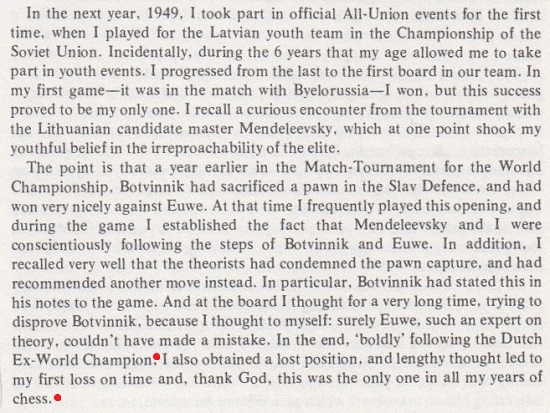
The passage is on pages 20-21 of the 1997 Cadogan edition of Tal’s book.
When the game between Mendeleevsky and Tal (Riga, June 1949) was given on pages 12-13 of Mikhail Tal Tvortshestvo 1949-1961 (Riga, 1996) Black’s loss on time was mentioned:
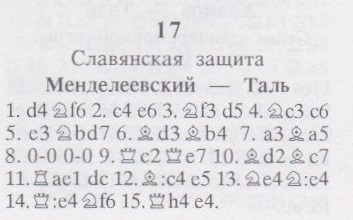
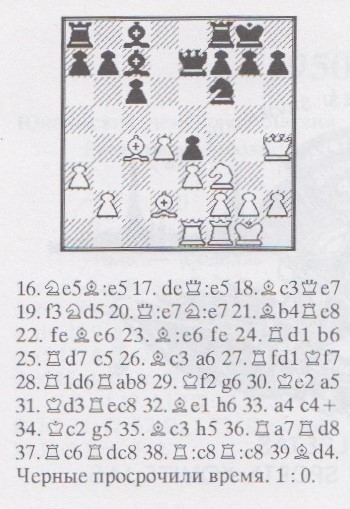
(9539)
From page 288 of the Australasian Chess Review, 8 October 1936:
‘Among the masters, it seems that clock management is the hardest part of the game. Only Lasker and Capablanca have mastered it, the former by his super-normal endowment of common sense, the latter by heaven-born genius.’
(9803)
See too ‘Notes on the Time-Factor in Chess’ by W.O. Cruz on pages 416-417 of CHESS, 14 August 1938.
A surprising remark on page 13 of How to Improve Your Chess: Second Steps by I.A. Horowitz and F. Reinfeld (New York, 1952):
‘When a master gives a simultaneous exhibition against anywhere from 20 to 60 opponents, he has something like half a minute for each move he makes.’
(10025)
From page 96 of Wonders and Curiosities of Chess by Irving Chernev (New York, 1974):
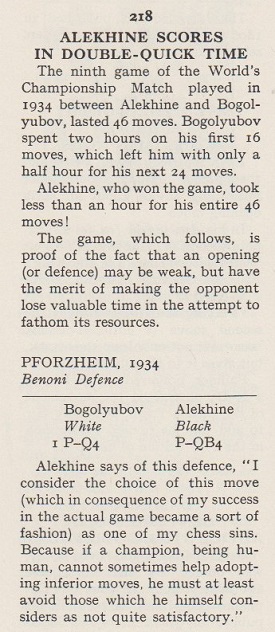
This was number 63 in Alekhine’s second volume of Best Games. The final clock times given on page 55 of Bogoljubow’s book on the match were White: 2 hours 41 minutes; Black: 58 minutes.
(10221)
From page 13 of The Chess Mind by Gerald Abrahams (London, 1951):
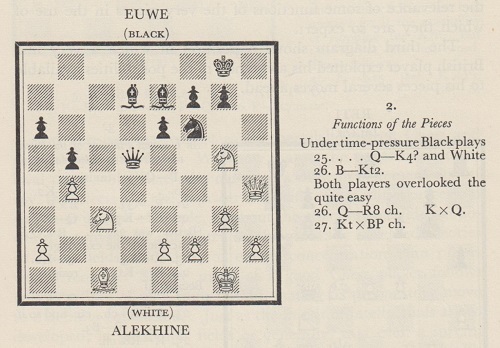
As already demonstrated, it was Alekhine, not Euwe, who was short of time.
Writers wishing to revel in world champions’ lapses may choose to ignore the issue of clock-pressure. See, for instance, pages 29-30 of The Inner Game of Chess by A. Soltis (New York, 1994) and pages 140-141 of the same author’s Chess Lists (Jefferson, 2002).
A sample comment from the latter book, after 27 a3:
‘Black continues to allow – and White continues to miss – the Qh8+ combination, the kind most 1800-rated players would find quickly.’
It may be pointed out, however, that Alekhine’s own annotations to the game, in his match book, had only one reference to the clock, and it was later in the game: he stated that at move 31 he ‘was very short of time’. Alekhine’s general view about time-shortage not being an excuse may be recalled from C.N.s 7973 and 10354.
(11137)
Which is the most recent chess event in which a player was, or could have been, fined for non-compliance with the rules?
In the nineteenth century such provisions were commonplace, and below are extracts from the conditions for a proposed match between Harrwitz and Löwenthal, on page 249 of the British Chess Review, 1853:
‘6. ... If either party be absent within half-an-hour of the time appointed for play, he shall be fined £1 for every such offence, the fine to be paid before or at the next meeting for play, under penalty of the forfeiture of the match; and if he be absent more than one hour beyond the appointed time, one game shall be added to the adversary’s score.’
‘10. Each party shall be allowed 20 minutes for deliberation on any move. In the event of either party taking more than 20 minutes, he shall be fined the sum of ten shillings for each additional ten minutes (the fine to be paid as in Condition 6). But neither party shall be allowed more than one hour over a move, and the party who does not play a move at the expiration of one hour shall forfeit the game to his opponent.’
From page 18 of John Nunn’s Secrets of Practical Chess (London, 1998):
‘When analysing a given position, it is fair to say that one almost always sees more in the first five minutes than in the next five minutes. The five minutes after that is even less productive, and so on. I have observed that if a player spends more than 20 minutes over a move, the result is almost always a mistake. The normal decision-making process should not take longer than this, even in fairly complex situations.’
From page 59 of Anatoly Karpov: Chess is My Life by A. Karpov and A. Roshal (Oxford, 1980):
‘I am asked why it is that I play quickly (can it be, they say, that I am never in doubt as to what to play?), and why my games frequently end in draws ... The rapidity of my play is not at all, as some think, due to the fact that everything is clear to me. Simply I don’t wish to get into time trouble. So far this has happened to me two or three times in my life, and I realize that sometimes it is better to restrict oneself simply to a good move and not seek the very strongest, rather than suffer the dissatisfaction of defeat.’
See too Fast Chess and Chess Tempo/Tempi.
For the Norman v Rubinstein time-limit episode, see Chess Anecdotes.
To the Chess Notes main page.
To the Archives for other feature articles.
Copyright: Edward Winter. All rights reserved.